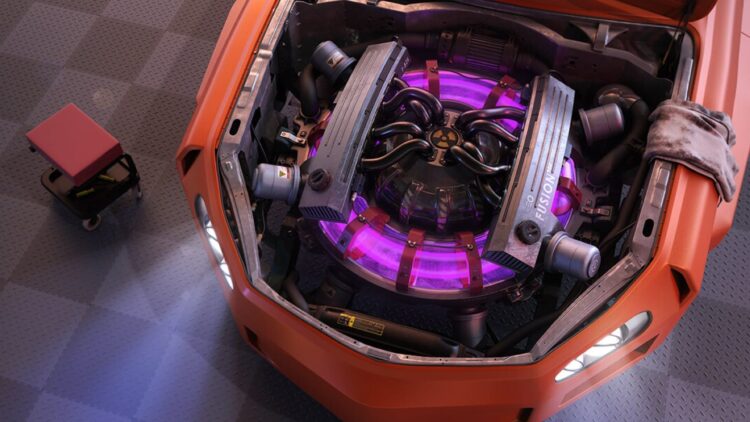Nuclear fusion refers to a process in which two light atomic nuclei combine to form a heavier nucleus, releasing a significant amount of energy in the process. This reaction is the same process that powers the sun and other stars, where hydrogen nuclei fuse to create helium under extreme temperatures and pressures. Another form of nuclear power which NASA has currently proposed is low-energy nuclear reaction (LENR) technology plans which we could possibly see in vehicles.
Nuclear power: Fusion vs fission
Nuclear power is generally divided into two camps. Nuclear fusion and nuclear fission. Both processes release energy but while fusion combines light nuclei and is seen as a cleaner and potentially limitless energy source, fission splits heavy nuclei and is currently used in power generation. However, fission technology creates significant radioactive waste and safety concerns. Fission technology is what underpins nuclear reactors.
LENR on the other hand, while also working with nuclear energy, is unrelated to either of these concepts. LENR harnesses power from weak nuclear force. This is also often referred to as cold-fusion. LENR does not generate ionizing radiation or radioactive waste. This is because it capitalizes on slow moving neutrons. This means that LENR lends itself very well to vehicular and at-home nuclear reactors that provide both heat and electricity.
The current potential of LENR
Capturing the energy from LENR is a difficult process. So far, NASA has only been able to do it with nickel lattice and hydrogen ions. Hydrogen ions enter the nickel structure, which then vibrates at a very high frequency (between 5 and 30 terahertz). This vibration energizes the nickel’s electrons, pushing them into the hydrogen ions (protons) and creating slow-moving neutrons. The nickel quickly absorbs these neutrons, making it unstable. To become stable again, the nickel removes an electron from a neutron, turning it into a proton. This reaction changes the nickel into copper and releases a lot of energy.
According to NASA experts, 1% of the world’s nickel production could meet the world’s energy needs, at a quarter of the cost of coal. Thus, if we can harness the energy on a large scale, it would be revolutionary in terms of viable clean energy. However, while this seems like the solution to the fossil fuel problem, there are many challenges which comes with using LENR.
Building an efficient LENR system is a problem
The problem we run into with LENR is that it is hard to build a LENR system that produces more energy than the energy required to begin the reaction in the first place. The objective would be to make an efficient system, and one which produces less energy than it uses would not meet the mark. This is also the problem scientists run into with fusion technology.
While LENR still remains an area to be explored, there is no ruling out that we won’t see automobile engines operating off of nuclear fusion and fission technology or even advancing success in LENR. Toyota has already experiments with LENR technology, to which they have had little success with currently. While current technology does not seem to support the use of nuclear power in automobiles, there is no saying for certain what the future holds.
Current alternative fuel sources which are having more success in the automobile industry is advances in electrical vehicles and hydrogen fuel-cell technology. These alternatives may be the better options for industry to invest capital in, particularly because we already have vehicles on the road which utilize this technology. The major challenge currently is for industry to produce and sell a vehicle to consumers which is both green and affordable.

